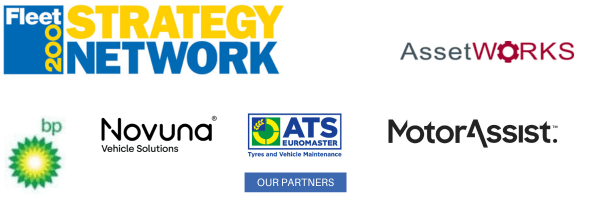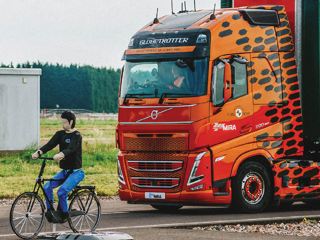
Fleet decision-makers debated the impact of commerical vehicle payloads, the changes to the rules on weight limits and challenges to decarbonising van fleets at the May meeting of the Fleet200 Strategy Network in Daventry.
Here are the key points aired during the discussion.
Video: hear why fleet decision-makers value the Fleet200 Strategy Network (find out more and apply to join below)

Fleet decision-makers debated the impact of commerical vehicle payloads, the changes to the rules on weight limits and challenges to decarbonising van fleets at the May meeting of the Fleet200 Strategy Network in Daventry.
Here are the key points aired during the discussion.
- Fleets are concerned about payload issues with lighter vans which are forcing them to move to bigger sizes, often then risking getting sucked into the 4.25t derogation issues.
- Fleets called on DfT/OZEV to provider clearer timetables and timelines on derogation discussions, especially when they are dealing with up to a year’s lead times from order to delivery.
- Questions were raised about whether drivers are capable of handling 4.25t vans as safely as 3.5t vans.
- There was a recognition that as Government puts pressure on manufacturers to sell zero emission vehicles, via the ZEV Mandate, so manufacturers then put pressure on fleets to buy them, by introducing quotas. However, for many fleets, the technology is not ready to enable them to transition to electric, especially for vans.
- Falling residual values are a concern because they impact the lease price which is increasing costs for fleets. In response, OZEV acknowledged that it is still early years in the transition and there will be bumps along the way.
- With the Government requiring its own fleets to transition to 100% zero emission by 2027, some organisations are having to extend diesel for longer in order to prepare to meet the deadline (because they can’t switch into appropriate ZE vehicles today). This is increasing VOR. One example given as moving six-year leases into a seventh year but the VOR costs the organisation in fines and/or lost business for missing their efficiency targets.
- Costs also rise when a van is used to transport multiple people; likewise, charging during the day is also more expensive in terms of downtime costs when multiple people effectively are taken offline.
- Around 1,000 vehicles are affected by the 4.25t derogation our of an electric van market of 50,000 vehicles.
- There are other issues related to electric vans if they are fridges or require additional onboard power, such as lightbars or even keeping the vans warm when stationary, e.g. welfare vans. This can halve the range from 220 miles to 100-120 miles and it’s even worse in winter.
- The key measurement is not average daily mileage; it’s the daily fluctuations in business mileage. Fleets have to accommodate the occasional cases where the vehicle has to do greater mileage.
- Fleets believe manufacturers are not interesting in vans that are anything other than a basic box spec. Anything that requires converting is not being considered for electrification use cases.
- In response to a question about tyre particulates, OZEV is participating in an international study not particulate matter from tyres and brake dust. It is believed that the benefits of regenerative braking – if used properly – would mean BEVs perform similarly to ICE, not worse (as it often claimed in the media).
- Some insurers are insisting that workplace chargers must be as far away from the building as possible due to fire risks, particularly for overnight charging. However, there is no evidence to suggest that a building would react in a different way to a BEV fie versus an ICE fire. In July 2023 (updated Feb 2024), OZEV published enclosed car park guidance which includes guidance on fire safety considerations and information on the structural resistance of buildings in a BEV fire: www.gov.uk/government/publications/covered-car-parks-fire-safety-guidance-for-electric-vehicles.
Video: hear why fleet decision-makers value the Fleet200 Strategy Network (find out more and apply to join below)
Login to continue reading.
This article is premium content. To view, please register for free or sign in to read it.





















Login to comment
Comments
No comments have been made yet.